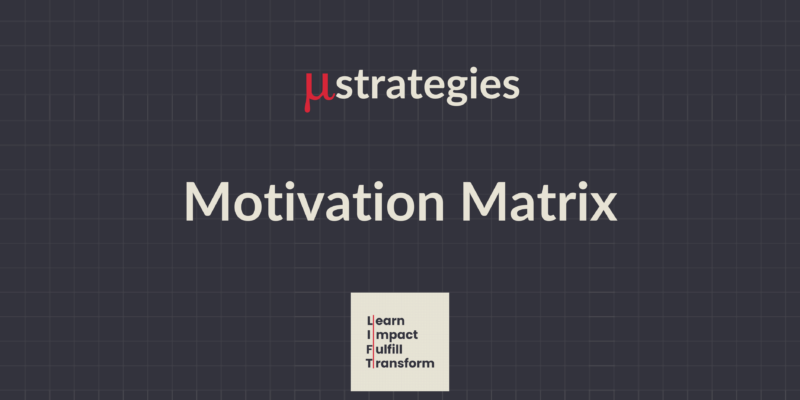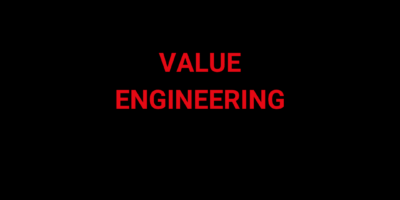|
Greetings Leaders,
Why do some teams thrive while others just get by?
It’s not perks. It’s not pay. It’s purpose.
Motivation is the engine of high performance. Yet, Gallup reports that only 31% of U.S. employees are engaged at work, marking a decade low. Low engagement drags down productivity, innovation, and retention. The best leaders don’t just demand results; they create conditions where motivation flourishes.
This edition of the LIFT Bi-Weekly Guide introduces the Motivation Matrix, a leadership Microstrategy to build purpose-driven teams that sustain energy, focus, and excellence.
Let’s dig in.
Adi
9/ MOTIVATION MATRIX
Why Motivation Fades
Most leaders assume motivation is an individual trait. Some people have it; some don’t. But motivation isn’t fixed. It’s shaped by the work environment. Several studies indicate that leaders and managers account for more than 70% of the variance in employee motivation and satisfaction.
Common Motivation Killers:
- Unclear goals: When the destination is fuzzy, teams feel that effort is wasted.
- Lack of recognition: Hard work without acknowledgment drains team and individual morale.
- No autonomy: Without delegated control and a level of operating and creative discretion, people feel like cogs, not contributors.
- Disconnection from purpose: Work for the sake of output, without an aligning mission with meaning leads to burnout.
The Impact:
- Disengaged employees cost companies $8.8 Trillion in lost productivity.
- Organizations with highly engaged teams are 21% more profitable.
- Companies that focus on employee performance are 4.2 times more likely to outperform their peers, realizing an average 30% higher revenue growth.
- 75% of employees say motivation improves when they understand how their work contributes to company goals.
Motivation isn’t a mystery. It follows a pattern. The best leaders apply simple systems to fuel it.
The Motivation Matrix (MM): A Microstrategy for Leaders
MM is a structured way to understand and activate the four core drivers of motivation:
- Autonomy – The ability to make decisions and shape work.
- Mastery – The drive to improve and be recognized for skills.
- Purpose – The connection between work and a greater mission.
- Belonging – Feeling valued as part of a team.
Each factor plays a different role. Together, they create sustained motivation.
How to Apply MM
Step 1: Run a Motivation Check-In
Every quarter, hold a Motivation Alignment Session with your team or individuals. Use these guiding questions:
- Autonomy: “Where do you feel most empowered? Where do you need more ownership?”
- Mastery: “What skills do you want to develop? How can we support that?”
- Purpose: “How does your work contribute to something bigger? What would make it more meaningful?”
- Belonging: “Do you feel valued? What could improve team collaboration?”
Step 2: Identify Friction Points
Look for patterns. If multiple people feel disconnected from purpose, the issue isn’t them. It’s the system. e.g. If autonomy is low, employees may feel micromanaged. A simple fix? Shift, from task-based to outcome-based leadership. Instead of saying, “Do this,” say, “Here’s the goal. What’s the best way to get there?”
Step 3: Implement Small, Targeted Adjustments
You don’t need a full overhaul. Small shifts compound into big results.
- Autonomy: e.g. Let employees design their own workflows for routine tasks. This empowers them to take ownership and innovate in their roles.
- Mastery: e.g. Set up peer coaching sessions where employees teach a skill. This enhances skills and builds confidence and recognition.
- Purpose: e.g. Share customer impact stories in meetings. This connects daily tasks to real-world outcomes reinforcing the significance of their work.
- Belonging: e.g. Establish monthly “wins” meetings to recognize contributions. Celebrating achievements fosters a sense of community and appreciation.
The Leadership Skill
This practice hones the leadership skill of building and sustaining motivated teams. It creates the bias to clarify, instrument, and measure engagement and motivation levels continually and adapt or take corrective action to sustain high levels of team satisfaction and performance.
Clarity, Velocity, and Mastery: How MM Strengthens Leadership
1. Clarity:
- When employees understand how their work connects to the company’s goals, they see the bigger picture.
- This alignment reduces confusion and ensures all efforts drive meaningful outcomes.
2. Velocity:
- Engaged teams act decisively, reducing hesitation and delays.
- A motivated workforce is quicker to problem-solve, experiment, and adapt, propelling projects forward with momentum.
3. Mastery:
- A motivating environment encourages continuous learning.
- When employees (and leaders) sharpen their skills, they contribute more effectively, and the business gains an innovation edge.
Motivation isn’t just a feel-good factor. It’s an outcome accelerator.
Your Action Plan This Week
1. Run a Motivation Check-In: Choose one person or a small team. Use the four Motivation Matrix questions.
2. Identify One Key Gap: Look for a pattern. Which driver is weakest: Autonomy, Mastery, Purpose, or Belonging?
3. Apply One Targeted Fix: for example
- If Autonomy is low → Empower employees to set their own project milestones.
- If Mastery is low → Provide an online course stipend.
- If Purpose is low → Share a customer success story at the next team meeting.
- If Belonging is low → Introduce a peer recognition shoutout in Slack or meetings.
4. Track Progress Over 30 Days: Use a simple pulse survey to measure impact.
5. Download the Motivation Matrix Cheat Sheet
What’s in the Cheat Sheet?
- A step-by-step guide to running the MM Microstrategy
- A checklist of common signs of effective execution
- A tracking tool for measuring improvements in clarity, velocity, and outcomes
Why This Micro-Strategy Works
This practice improves leadership impact. Leaders cement the methods and habits that lead to:
- Ongoing awareness of the motivation levels of their teams.
- Paying attention to the leading indicators and frictions that reduce motivation.
- Supporting a healthy and positive work culture with high levels of engagement and productivity.
Remember: Motivated teams think bigger, execute faster, and stay longer. This week, take one step. Run a check-in. Apply one fix. The impact will compound.
Download: Motivation Matrix Microstrategy Cheatsheet.pdf
All data referenced in this edition are sourced from Gallup, Forbes, and McKinsey studies and publications.
Share this newsletter with friends
Follow and Connect with me on LinkedIn. I post every day.
|








Comments